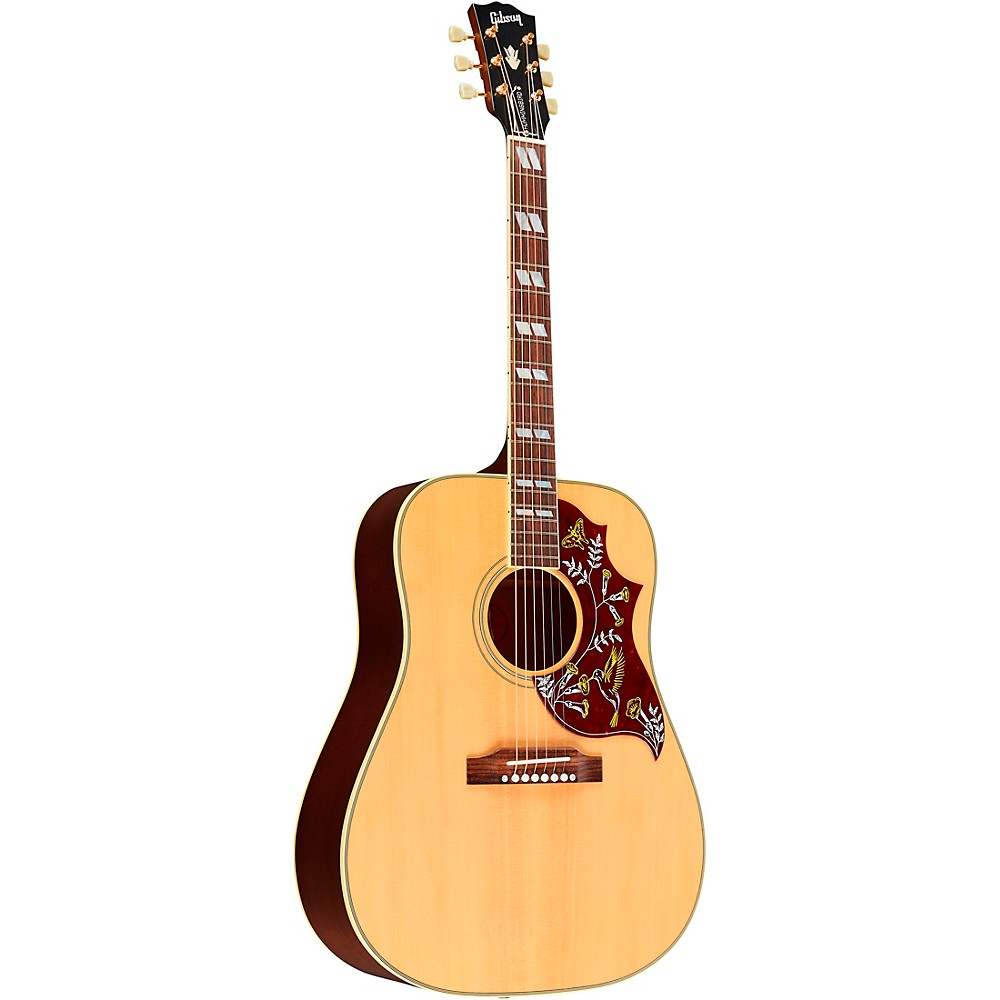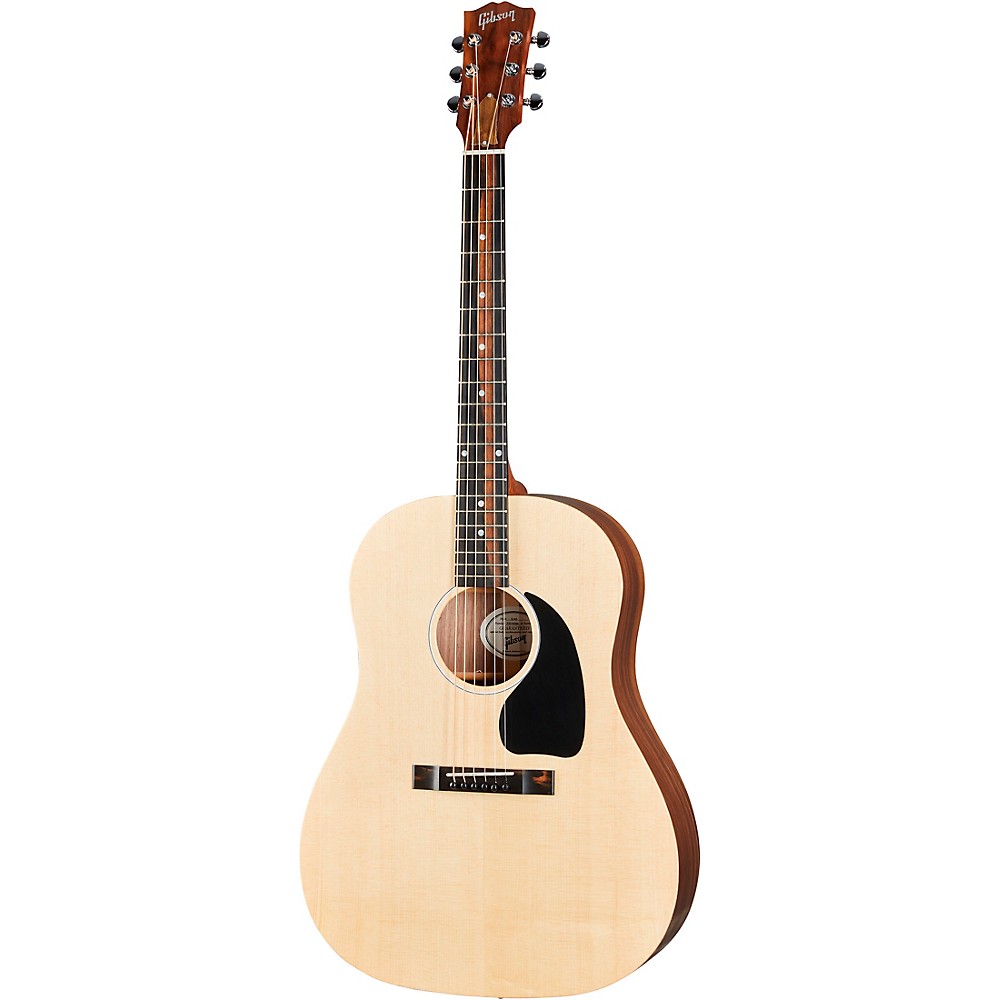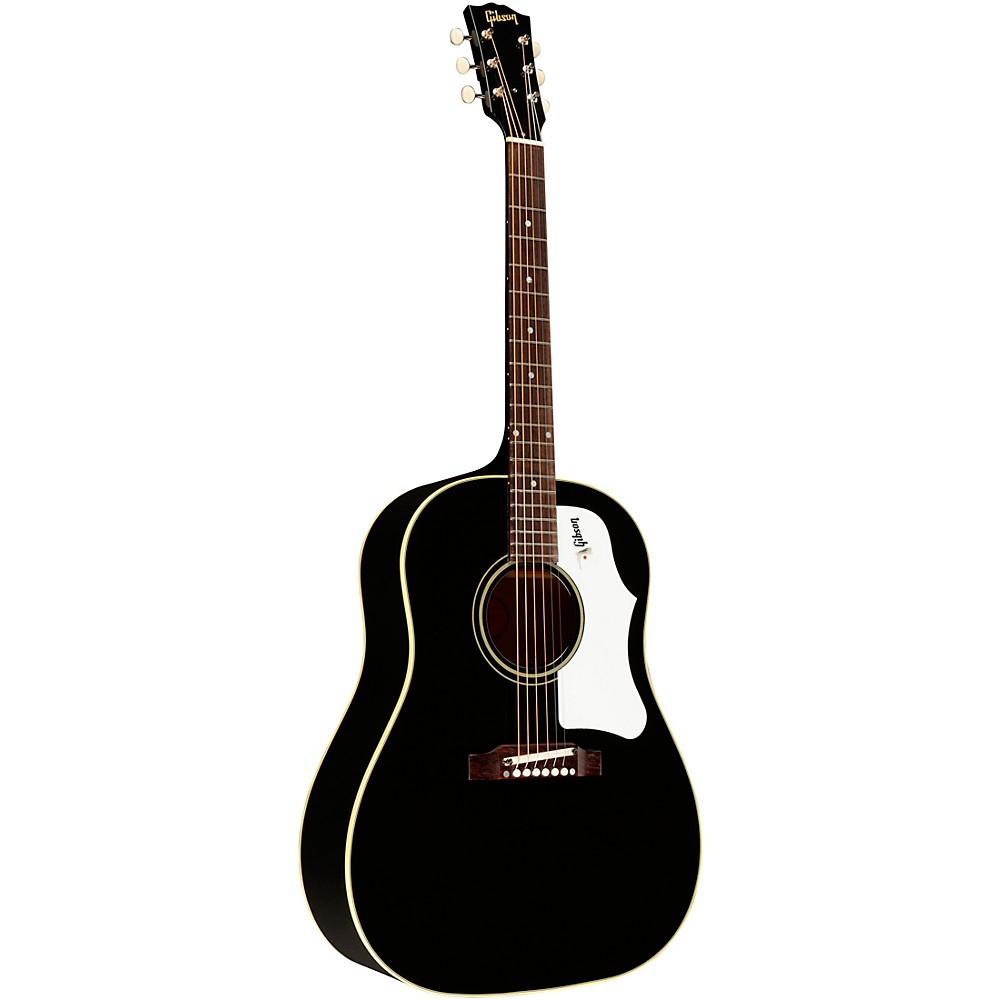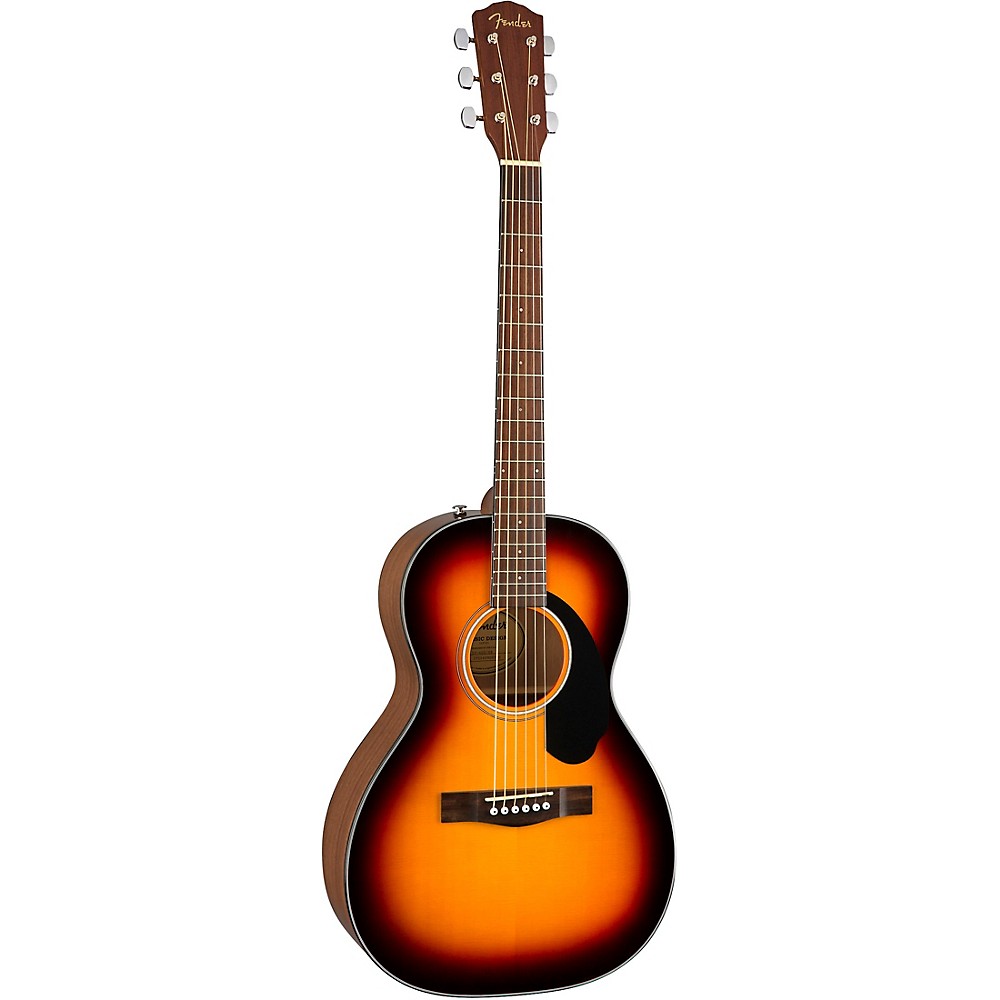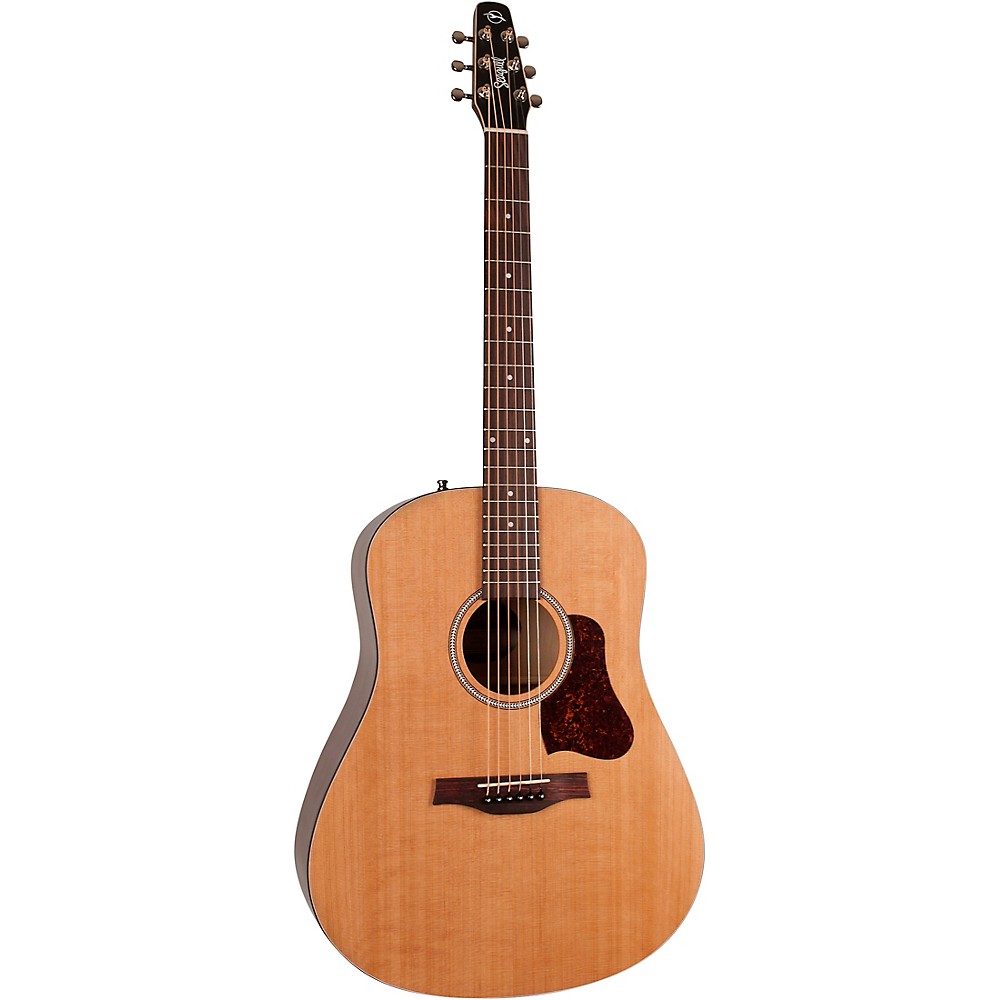Guitar scale lengths are somewhat of a misunderstood dark art of the acoustic guitar world. The exact benefits they offer, and how it affects the playability of an instrument are not always immediately clear.
We commonly associate short-scale guitars with being slightly easier to play for those with small hands, but the effects can extend far beyond that. While 25.5” is the most common scale length, the shorter scale length of 24.75” is very widely used throughout the guitar space, with many actively seeking out guitars with this neck length.
So today we’re taking an in-depth look at what this scale length offers, but first, if you are looking for a list of 24.75″ acoustic guitars, the list below includes some of the most popular models available.
- Gibson Hummingbird
- Gibson G-45
- Gibson J-45
- Cort Core-PE AMH
- Cort Earth 100ss
- Fender CP-60s
- Seagull S6
- Blueridge BG60
- Santa Cruz Vintage Southerner
For more information on each of these guitars and how a 24.75″ scale length affects tone and playability continue reading.
Gibson Hummingbird
The Hummingbird is one of Gibson’s most well-known acoustic guitars, and it’s also one of the most well-known 24.75” scale-length guitars.
Popularised during the 1960s, the Hummingbird was Gibson’s first ever square-shoulder Dreadnought guitar and is considered a go-to instrument when you need access to a wide range of sounds from bright and loud to soft and dynamic.
The hummingbird itself is actually a line of guitars that have been reissued and revamped a number of times over the years. Definitely, a great one to check out if you need a ‘safe’ 24.75” guitar.
Gibson G-45
The G-45 is another well-known model which features a Sitka spruce top with gorgeous walnut back and sides.
It has a slightly thinner and rounder shoulder body which many feel makes it more comfortable to play. It also has a couple of new modern upgrades including a TUSQ nut and saddle, along with Grover Mini Rotomatic tuners making it one of the most stable guitars around, ideal for keeping that shorter scale in line!
Gibson J-45
Juxtaposed to Gibson’s more contemporary G-45 is the more traditional J-45. Nicknamed “The Workhorse”, it’s going to serve you well regardless of what style you play.
The J-45 has been around since the 1940s and set the standard of what a great dreadnought guitar should be.
It features a full mahogany back and sides for that depth and rich warmth bass response, with a Sitka spruce top which adds brightness and life to the guitar.
A true all-rounder instrument.
Cort Core-PE AMH
Cort has really stepped up their game in recent years, staying at the forefront of technology and industry standards to bring us modern, functional instruments with appealing aesthetics.
Cort’s ‘core essential’ line guitars are designed to be simple, no-frills instruments. They feature an all-mahogany body which makes them sound slightly darker, warm, and rich. Plus most of their models are kitted with Sonitone EQ electronic systems which are internally mounted to the instrument, meaning no wood has to be cut away.
Additionally, it has an Ovangkol fretboard which compliments the mahogany giving it an overall luxurious feel.
Cort Earth 100ss
Cort’s answer to the classic sloped Dreadnought shape. It features an African Mahogany back and sides with a Sitka spruce top which creates a nice balanced tonal palette.
It’s one of the few 24.75” guitars to feature a genuine water buffalo bone nut and saddle which is said to increase the resonance and sustain of the instrument.
Visually it has a beautiful burst finish which allows the Sitka spruce to compliment the darker mahogany perfectly.
Fender CP-60s
Usually, we associate Fender with expensive all-American made guitars. But over the last decade, they have made huge strides in diversifying their range and making their instruments more accessible to a wider audience.
No guitar portrays this better than the CP60s. It’s a small parlor guitar that has all the quality of construction you’d expect from Fender, but it retails for just over $200!
Needless to say, if you are a beginner or you need a guitar you can use and abuse for shows and not break the bank, this is definitely one to check out.
Seagull S6
The Seagull S6 is a difficult one to talk about as its scale length has actually changed over the years. Their current date production models are made with a 25.5” scale length.
However, the older Seagull S6 Originals were made with a shorter scale length of 24.75” which has led to much confusion on guitar forums from users who are wondering why their guitar’s scale length doesn’t match the website’s specification.
Blueridge BG60
Aiming to provide that classic slope-shoulder vintage sound and feel of the Gibson Hummingbird at a more affordable price. The BG60 features a powerful wood combination finished in a beautiful sunburst design.
According to many, the level of craftsmanship and care that has gone into this guitar far exceeds its price tag.
While technically it’s a 24.7” scale guitar, this is more of a manufacturing preference, and not because it has any real differences in tone or feel from a 24.75” guitar. They will play and feel identical.
Santa Cruz Vintage Southerner
Prior to 2019, the Vintage Southerner was a pre-built guitar that adhered to the same specifications. But as the popularity of the model increased, Santa Cruz Guitars started to offer more and more options, to where now you can actually create your own model and further match it to your preferences.
What does scale length mean?
While some guitarists just like to grab whatever they think looks good and call it a day, many of us, like to know all the details about an instrument so we can be absolutely sure we’ve picked the best instrument possible that perfectly aligns with our preferences.
If you fall into that category then a guitar’s scale length is something you want to be mindful of.
Before we get into the specifics of scale length and how it affects the playability of your guitar, let’s get an understanding of what scale length actually is.
In simple terms, the scale length of a guitar is the distance between the nut of the guitar and its bridge, or another way to think about is that it’s the total vibrating distance of the string.
But an important thing to note is that we don’t measure this on a string-by-string basis, because technically the total vibrating length of each string is a little different due to the mass of each string affecting intonation…meaning each string has its own unique length.
You can read all about how to measure scale length here, but in simple terms, the easiest way to measure scale length is to measure between the nut and 12th fret and then double the measurement.

As we mentioned the most common scale length we encounter is 25.5”. We generally measure scale length in inches no matter what country you are in, this is because most of the big guitar companies are American so it’s just easier this way.
How does a 24.75” scale length affect the playability of a guitar?
At first glance, you might look at a few scale lengths and think to yourself the differences between different scale lengths are so small, does it really make a difference?
And the answer to that is yes, absolutely! And far more so than you may initially think.
Neck length
This is probably the first thing you will notice when you pick up a short-scale guitar. The nature of having a shorter neck means the space between the frets is reduced.
This can be a blessing or a curse depending on how big your hands are. But some people really love the feel of a shorter scale length, those chords like a Sus2 which require a big, often uncomfortable stretch suddenly become less challenging to play.
From a pure economy of motion perspective, it’s great.
However, some people don’t like the ‘cramped’ feel it offers and would prefer something a little larger.
String gauges and tensions
Another significant component of how a guitar feels to play is the gauge e.g. thickness of the strings, and tension placed on the neck as a result of the strings being tuned to pitch.
Some people prefer the feel of looser strings with more gives the tone and attack a bit more spank, while others prefer the stability and consistency thicker strings offer.
Scale length, string gauge, and string tension are all intrinsically linked. This can be a challenge to wrap your head around so let’s cover how this all works.
There are fundamentally 2 elements that affect the tension of a string, and those are the scale length and the gauge (thickness) of the string.
Let’s take a low E string for example. In order to bring a string up to pitch, it will require on average about 160 lbs of tension. When you change the thickness or length of a string, it will also change the amount of pressure needed to achieve that desired E pitch.
If you swap a string out for a thicker gauge, that thicker string will naturally produce a lower pitch simply because it has more mass which makes it vibrate slower. So in order to bring it up to our desired E pitch, we now need to exceed that 160lbs of pressure and tune it even tighter.
Essentially a thicker string = more tension. Simple!
However, our scale length, or the string length, will also play a factor in how tight we need to tune a string in order to bring it up to pitch.
A longer string will naturally produce a lower pitch, meaning it will require more tension to bring it up to pitch. While a shorter string naturally produces a higher pitch, meaning we need less tension to bring it up to pitch.
So what does this mean for our 24.75” scale length?
As this is a shorter scale length, it means it will naturally reach our desired pitch with fewer lbs of tension applied to the string. This results in looser strings.
If you don’t like looser strings and prefer a similar feel to that of a 25.5”, then you can easily offset this by using a thicker string gauge, which as we discussed requires more tension to be brought up to pitch.
To summarize:
A shorter scale length, assuming you don’t increase the string gauge, will have looser strings because a shorter string requires less tension to reach a given pitch.
Tone
When using a 24.75” scale length guitar there are 2 main factors that contribute to the overall tone of a guitar.
Assuming you haven’t increased the string gauge and are embracing the slightly looser strings, this scale length is known to produce a slightly warmer and fuller sound than a guitar with a longer scale length.
This is because the lower tension of the string allows it to vibrate more freely and produce denser harmonics, particularly on the lower end.
Whereas a guitar with a longer scale length generally has a more focused and tighter sound, particularly in the low end because of the higher string tension.
Again, you can offset this slightly by purchasing a different string gauge.
This is evident when taking a closer look at the two big players in the electric guitar space, Gibson and Fender. For example, Gibson guitars (24.75″ scale length) usually sound warmer, due to the more prominent overtones in the mid to low-end frequency range, whereas Fender guitars (25.5″ scale length) usually sound brighter.
Of course, this cannot be attributed to scale length alone, Gibson guitars are often manufactured from Mahogany and also feature a set neck, as opposed to Fender which typically features denser woods such as Alder and Maple which produces a brighter tone and are typically bolt-on necks, but all things being equal scale length certainly has a major impact on tonality.
Final thoughts
Understanding how scale length affects string tension and fret spacing really opens up your options and allows you to hone in on your preferences to find that perfect balance between ease of playability, and the tonal qualities you desire.
If you haven’t tried a 24.75” scale-length guitar before we highly recommend you head down to your local music store to give one a try. Even those with bigger hands who, at first glance, might not see the benefits of a short-scale guitar will often be won over by the level of comfort and ease of playability on offer.

